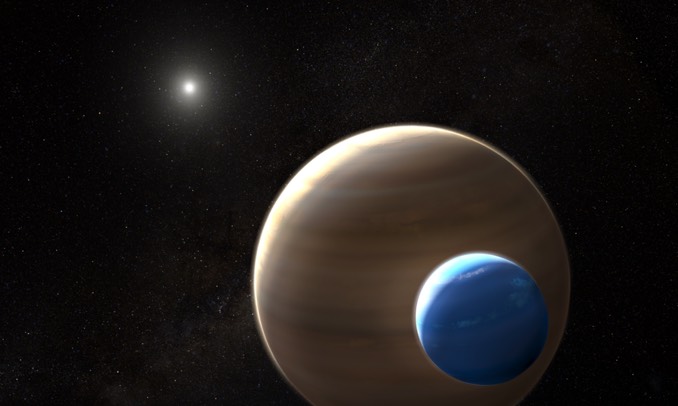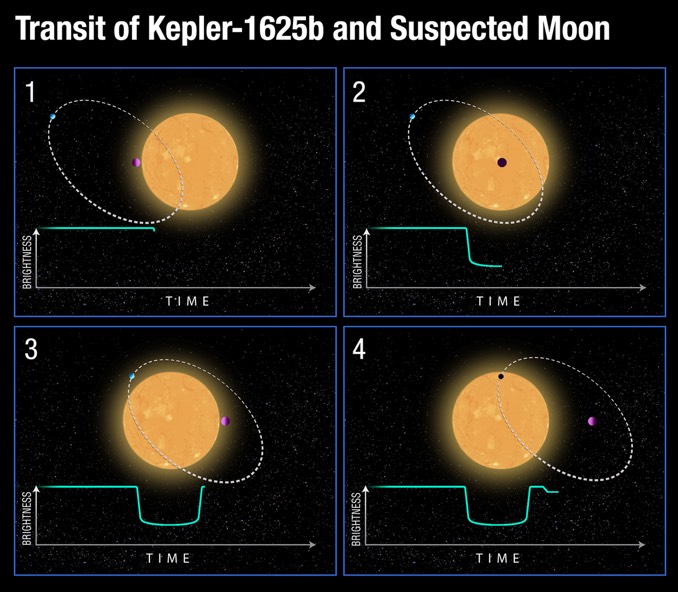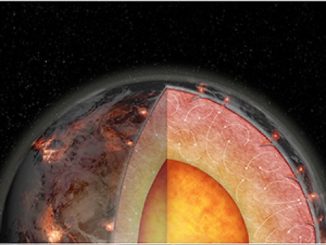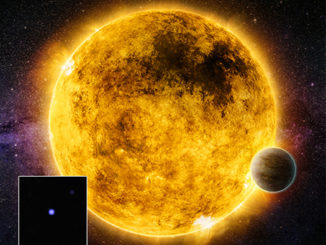
Astronomers reviewing data collected by NASA’s Kepler space telescope have found the first evidence for a possible “exomoon” orbiting a gas giant planet 8,000 light years away.
That evidence came in the form of complex dips in the brightness of a star known as Kepler-1625. The first drop in brightness occurred as a confirmed gas giant planet moved across the face of the star as viewed from Earth. A much smaller dip followed, indicating the passage of a large gravitationally bound moon.
While the Kepler data was suggestive, additional support came from the Hubble Space Telescope, which spent 40 hours monitoring the brightness of Kepler-1625. Along with the observed double-dip light curve, Hubble also detected changes indicating the sort of motion one would expect from two bodies orbiting a common center of mass.

While it’s possible an as-yet-undetected planet is responsible for the unusual light curve, “a companion moon is the simplest and most natural explanation,” said David Kipping of Columbia University in New York.
“It was definitely a shocking moment to see that Hubble light curve, my heart started beating a little faster and I just kept looking at that signature. But we knew our job was to keep a level head and essentially assume it was bogus, testing every conceivable way in which the data could be tricking us.”
Writing in the journal Science Advances, Kipping and Alex Teachey, also with Columbia University, conclude an extremely large moon, possibly the size of Neptune, would be required to explain the data. There are no such giant moon’s in Earth solar system but confirmation of such a body elsewhere could shed new light on how planets and moons form and evolve across the cosmos.



